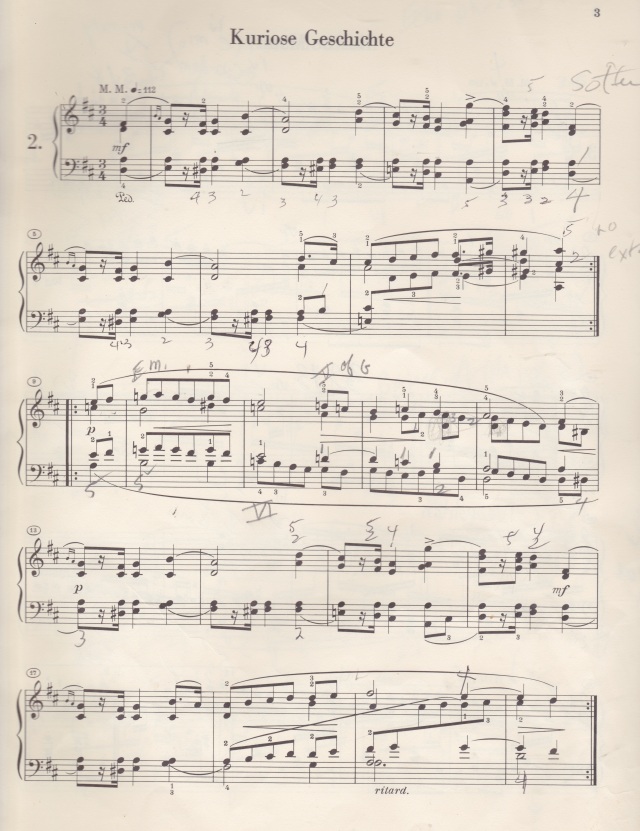For most piano students, an upbeat is considered a lighter springboard to a more predominant DOWN-beat, as if the UP in music should always be taken LIGHTLY. (except in Jazz framings where syncopations are characteristic of the genre.)
***
We can universally agree that in the patriotic Star Spangled Banner, the dotted 8th/16th upbeat is conspicuously wedded to the baton assertive first beat of whole measure one, but this will not be set in stone, as exemplified in Schumann’s “Curious Story.” (Kinderszenen, Op. 15, no. 2)
The Romantic composer’s second tableau turns the upbeat cliche on its head, prodding the student to rethink his weak mindset. If he persists in embracing the subservient upbeat mantra that it must be a co-dependent partner to a domineering downbeat, the player will be headed in unmusical directions. In fact, as a practicing experiment, the pupil can downgrade the anacruses in the first 4 measures of “Curious Story,” to experience its effect.

During a piano lesson with an adult student, we UPGRADED our upbeat conscious-raising journey. In fact, it helped us to clarify phrasing and attendant choreography. (Use of the springy, supple wrist, for example.) Such rhythmic phase focus was just one of our examinations, since we also delved into section contrasts, breathing, and harmonic rhythm as it influences phrasing. (inclusive of Major/parallel minor emotional shifts, etc.)
One pertinent practicing tool is to LIGHTEN the load of voices, and pick out the uppermost soprano line to realize the buoyancy or LIFT of the upbeats, and to understand their importance and value in achieving the whimsical/childlike nature of the opening measures. They are quite motivic to the character of the piece as the composer envisioned it.
from Arioso7's Blog (Shirley Kirsten)
https://arioso7.wordpress.com/2016/03/31/when-upbeats-have-a-new-meaning-and-importance/
No comments:
Post a Comment